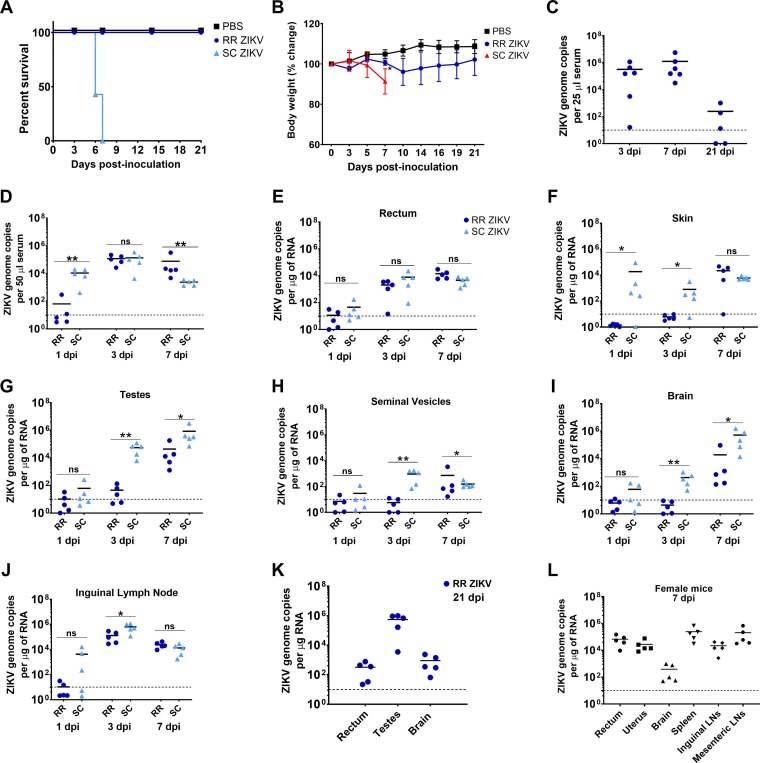FIG 1.
Rectal inoculation of ZIKV in Ifnar1−/− mice results in a nonlethal, self-limiting, and differential disseminating infection relative to subcutaneous ZIKV infection. (A) Kaplan-Meier survival plot showing the percent survival of Ifnar1−/− male mice postrectal inoculation with PBS (n = 5) or ZIKV (n = 6) (RR ZIKV) and postsubcutaneous ZIKV inoculation (SC ZIKV) (n = 6). (B) Percent body weight change of mice postrectal inoculation. Error bars represent the standard deviation (SD). (C) Viremia of infected mice via the rectal route (RR ZIKV) at days 3, 7, and 21 postinoculation (dpi). Each symbol represents one mouse, with means represented by black lines. Broken lines represent the limit of detection at 10 genome copies per microgram of RNA. (D) Viremia of mice infected through rectal (RR) or subcutaneous routes (SC) at days 1, 3, and 7 postinoculation (dpi). ZIKV genome copies detected in rectum (E), skin (F), testes (G), seminal vesicles (H), brain (I), and inguinal lymph node (J) tissues by RT-qPCR following 1, 3, and 7 days postrectal or subcutaneous inoculations with ZIKV. Each symbol corresponds to data for an individual mouse (n = 5 mice per group). Results are representative of one of four independent experiments. Two-tailed, unpaired, nonparametric Mann-Whitney tests were conducted (*, P < 0.05; **, P < 0.001; ns, no significance). (K) ZIKV genome copies in rectum, testes, and brain at 21 dpi. (L) Viral loads in rectum, uterus, brain, spleen, and inguinal and mesenteric lymph node tissues of Ifnar1−/− female mice at day 7 postrectal ZIKV inoculation.

